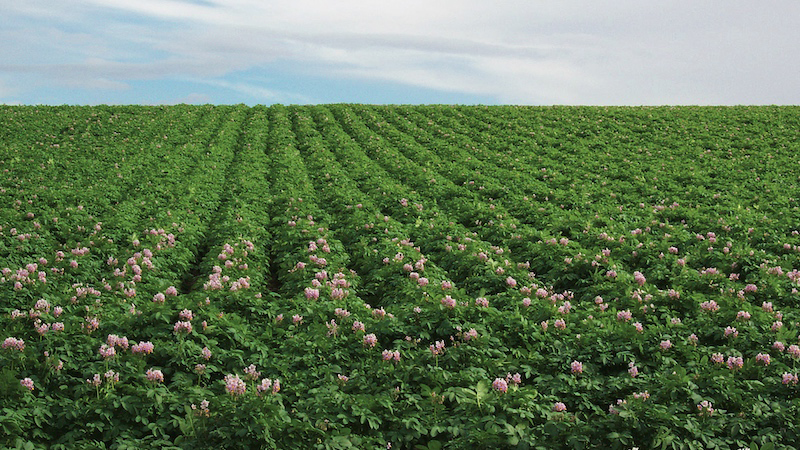Potato Harvest Reminders
Producing potatoes is a complicated business, as anyone who has tried growing them can attest. Getting them out of the ground and into storage while maintaining a high level of quality is every bit as complicated. The harvest season is also one of the most hectic times of the year because there is so much to do and only a limited amount of time to get it all done. With these thoughts in mind, I thought a brief reminder of some of the most important things to remember before and during harvest might be in order.
Vine Kill, Skin Set
The foundation of any quality harvesting program is vine kill. You’ll notice that I put both vine kill and skin set under the same heading. This is a natural pairing, because the two processes are so closely linked. We kill the vines for several reasons: to limit the size of the tubers, to dry the vines down so they don’t interfere with our machines during harvest, and last but not least, to initiate skin set in the tubers.
Only when the tuber stops growing can the skin of the tuber finally harden off and become fully mature. A mature skin renders the tuber less susceptible to water loss and invasion by disease organisms. After vines are killed, about two to three weeks is required for good skin set.
Pulp Temperature
The temperature of the tubers while they are being harvested and handled (we call this the “pulp temperature”) is very important. If tubers are too cold (below 42°F), they tend to be more susceptible to a type of physical damage called “shatter bruising.” If temperatures are too hot (above 65°F), tubers are more susceptible to disease and to a type of physical damage called “blackspot bruising.”
Tuber And Soil Hydration Levels
These two points have an obvious relationship to one another. Soil hydration not only has a direct influence on tuber hydration, but will also influence how tightly the soil adheres to the tuber. Too much soil on the tubers can cause problems with storage management later. Tuber hydration levels can influence the type and amount of bruising that occurs with underhydrated tubers being more susceptible to blackspot bruise and overhydrated tubers being more susceptible to shatter bruise. In general, soil hydration should be between 60% to 75% available soil moisture.
Manage To Avoid Bruising
Bruises can cost you money, both in storage and when your potatoes go to market. Much of bruise management is just good common sense. Basically, you should only harvest when pulp temperatures are in the recommended window and you should take steps to treat tubers gently.
Make sure that your machinery is properly maintained and is being operated properly. Avoid dropping tubers more than 6 inches if possible. Add padding to trouble areas on harvesters and conveying equipment.
Avoid Wounds
Most of the disease problems that you will encounter in storage occur because the tubers have been wounded, allowing the disease organisms a portal of entry. Almost every storage disease is favored by wounds, but some of the most important, such as Fusarium dry rot and Pythium leak, can only get into the tuber if a wound is present. The equation is simple: no wounds equals no disease.
As you can see, potato harvest is indeed a complicated process. Even though I have set these recommendations down under separate headings, you can readily see that all of these points are interrelated and a successful harvest management program will need to take all of them into account. Good luck and have a successful harvest!










